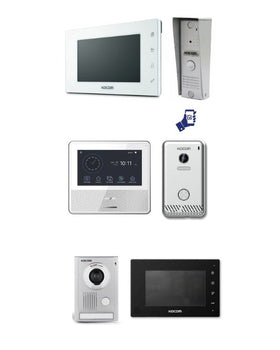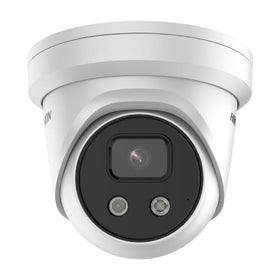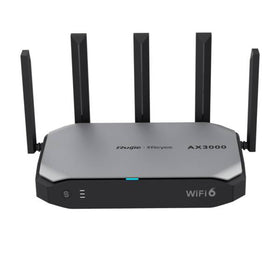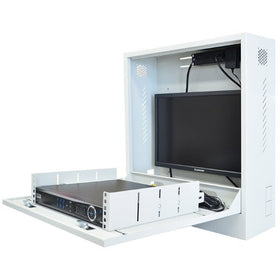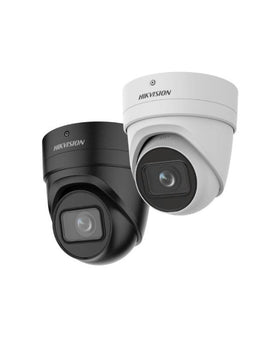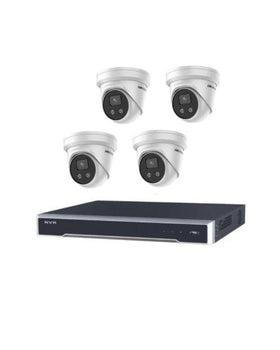Frequently Asked Questions
A Control Panel is the brains of the security system. It controls the actions of your detection devices and stores the user codes. The Control Panel is to be located within the armed area of the house. Typically all wiring for the house will come back to the control panel and connect into the system.
Generally the selection of the alarm system is in line with the Budget and Size of the premises to be protected.
Typically most domestic system will have standard 8 Input connections for Motion Detectors (PIRs) and Reed Switches.
Depending on the type this number can be doubled by the use of resistors and wiring. Each alarm system has its limitations on how many inputs can be connected, if they exceed the onboard capacities then expansion panels can be added to the system to increase the inputs and outputs.
Various motion sensors connect to the control panel from locations throughout your home.
If your security system is armed and the sensors detect a problem, they send signals to the control panel. The control panel automatically dials the central monitoring station or your mobile, where the proper authorities are notified.
In some systems like the Bosch 3000 and 6000 it can also send an SMS to your mobile with text information on what is happening on your system.
Check out our full range of Smartphone Alarm Systems.
Do they really work well, and are they easy to use?
Yes on both counts! Technological breakthroughs have led to the development of wireless electronic security products, and their effectiveness has been proven time and again over the years in millions of installations. Their rock-solid stability and long battery life make them a popular choice among homeowners and dealers alike. They give installers the flexibility they need to overcome obstacles like brick walls, cement floors and cathedral ceilings; and no drilling holes preserves the beauty of your home and results in cleaner, faster installations.
Folks today enjoy the convenience of remote control devices, and the security industry has responded! User-friendly wireless products provide the dual benefits of superior performance and ease of operation. Wireless keypads allow you to activate and de-activate your security system with the touch of a button, and can even be programmed so that a young child can operate it with ease.
Homeowners especially love wireless keys! Similar in size to a remote car alarm key, they fit right on your keychain, and the press of a single button lets you control your system, lights and appliances-eliminating the need for codes. This is especially great if you and your family enjoy spending time outdoors. Relax by the pool, garden, barbecue and entertain, or play with your kids in the backyard-enjoy extra mobility without compromising your safety!
The down side is wireless motion detection uses batteries and these will need to be changed every 12 Months or so, depending upon the battery type or when they run flat. The wireless alarm system will alert to low battery mode.
You operate your security system by entering your security code at the code pad. Generally located at entry doors, keypads can arm and disarm with push-button ease, and literally put security at your family’s fingertips! Good features to look for include illuminated keys to provide you with greater visibility at nighttime, easy-to-read English displays that spell out your system’s status at a glance, and one-touch function keys that provide single-button operation for arming, disarming or emergencies.
Keypads are also capable of displaying the time, temperature, conditions of the system and some systems like the Bosch Range can have built in Proximity readers which can be used to arm/disarm the system via a token. Keypads are not interchangeable via manufacturers as they rely on sending information to the control panel via an encrypted proprietary path.
Magnetic contacts are two-part devices used to safeguard windows and doors. One part of the contact is a switch installed in the window or door jam; the other contains a magnet and is placed in the window or door itself. Any noticeable shift in contact with the switch results in an alarm. Reed Switches as they are often called can be either recessed or flush mounted.
A Reed Switch is an expensive addition to an established house as cabling to windows and doors is labour intensive and difficult.
Answer richtext
A passive infrared motion detector (PIR) is an electronic security device that detects intruders by "sensing" motion or body heat in the area being protected. Most PIRs are designed to be used when your family is away from home or when no one will be passing through the area "covered" by the PIR.
The term Dual Tech is short for Dual Technology, It uses a combination of both Passive Infra Red along with Microwave to trigger an alarm. Typically Dual Tech sensors have lower false alarms as they require both movement and heat in order to trigger the sensor to go into alarm.
The term Tri Tech is short for Tri Technology. It uses a combination of Passive Infrared, Microwave and advanced signal processing to trigger an alarm. Typically Tri Tech sensors are used to cover larger areas and for harsher environments.
Shop Tri-tech Motion Detectors
Recent innovations in security technology have resulted in the creation of "pet immune" motion detectors-allowing dog and cat lovers to enjoy the same level of protection they would receive with a standard PIR. These state-of-the-art sensors provide "pet immunity" for animals weighing up to 100 lbs. Pet immune PIRs allow your pet to move about freely but can still detect an intruder’s movement.
"Acoustic" glass break sensors, usually mounted on ceilings or walls, work by "listening" for the sound of breaking glass in a window. "Shock" glass break detectors are mounted on the window and "feel" the shock of breaking glass. This kind of advanced wireless technology can provide shatter and shock protection for your windows, for often intruders are "sensed" and an alarm sounded while they are still outdoors. This is often enough to send a burglar running!
A duress button is used to trigger either silent or sirens when pressed to alert authorities, neighbours or family members that the person who pressed it is in trouble or fear of their life.
Duress buttons are typically installed in a discrete location out of the way of children and in an accessible location.
Since you own a smoke detector, you obviously realise what an important safety measure this device is.
That’s good. Smoke detectors are highly effective in preventing loss of life and property. However, there are differences between the "stand alone" or battery-operated smoke detector you would buy at your local hardware store and one installed as part of your home security system.
"Stand alone" detectors are not connected to other detectors or warning devices. A smoke detector connected to your security system offers more protection because it is monitored by a central station. If fire strikes, the detector sets off an alarm and sends a signal to the control panel. The control panel dials the central station, where the operator notifies the fire department. Only central station monitored smoke detectors provide automatic notification of authorities when you or your family are asleep, not at home or unable to get to the phone.
Battery backup is there for when your system loses the supply from the energy provider.
The backup battery should last at minimum 3 hours realistically. Most manufacturers state that it will last 7.5 hours but that would be under no load or very little connections.
The standard AS2201.1 states that the battery should be changed at least once a year. If your panel doesn’t use the battery due to no power outages this is a good idea. If the battery is used more for prolonged periods than at the end of the event the battery should be changed.

